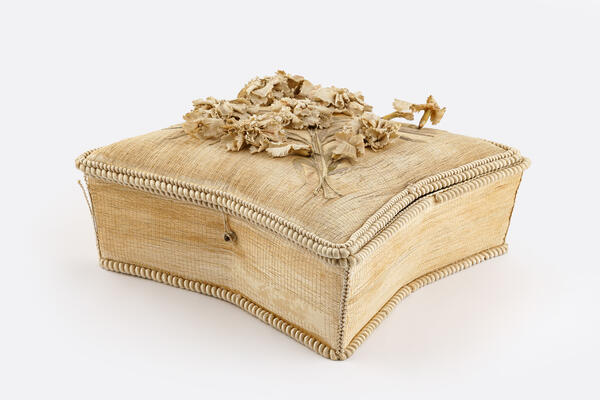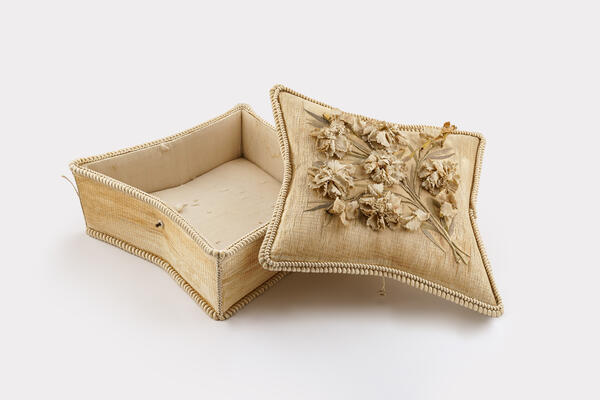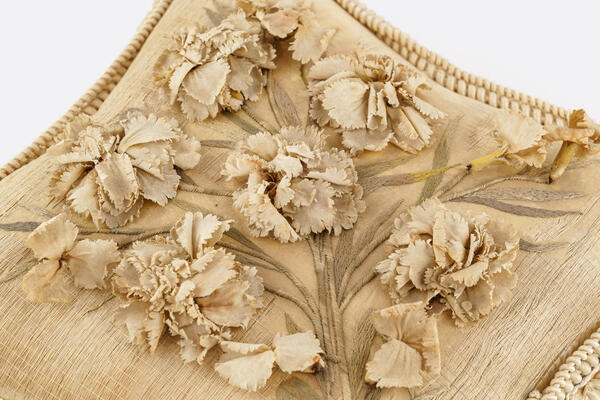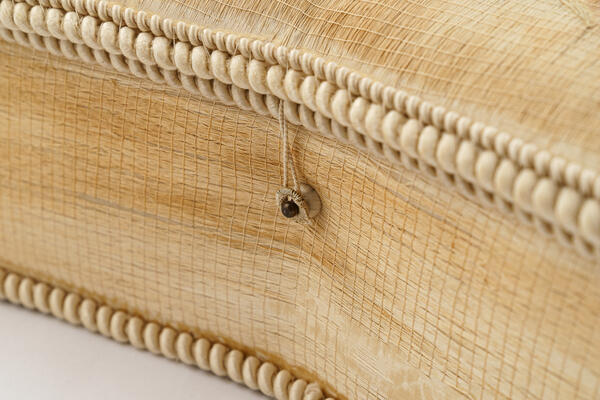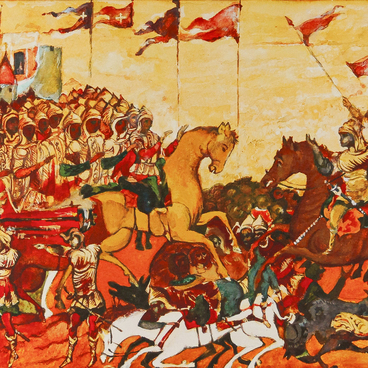The museum exhibition presents a jewelry box in the shape of a rhombus with concave sides. The base is made of hard material, presumably cardboard. The box is covered with fabric, the bottom is flat on the outside and soft on the inside, padded with cotton. The walls are vertical, slightly curved inward, the lid is flat on the inside and convex on the outside padded with cotton. The body and the lid are covered inside and outside with different kinds of beige-colored fabric. The lid on top has a volumetric decoration in the form of a bouquet of flowers: the leaves and stems are embroidered on the lid with satin stitch, using pale green threads. The flower petals are made of light-colored material and are attached to the surface of the lid with their edges, rising above it. The ribs and edges of the body and lid are decorated with beige cord-like braids of varying thickness. On one of the side walls there is a metal pin, to which a threaded loop, sewn to the lid, clings. At the end of the loop is a metal ring covered with thread. On the inside of the lid in the center is a gold-colored stamp Albert (presumably the stamp of the manufacturer of these boxes).
In Russia, jewelry boxes were popular from the time
of Peter the Great. The materials used to make boxes varied widely: wood,
natural stone, bone, porcelain, precious metals and so on. Jewelry, letters,
postcards, gloves and other small household items were kept in boxes. A
beautiful box could favorably accentuate the details of the interior, create a
pleasant impression, a sense of order, as it allowed the hostess to remove
small items out of guests’ sight. A box could be a gift in itself or become an
exquisite package for something more expensive. Given the popularity of floral
symbols (“the language of flowers” was
used in games with guests, and special cards were issued) in the early 20th
century, we can assume that the white carnations on the lid of this box may
indicate a connection with, for example, an upcoming wedding. The white
carnation was traditionally considered a symbol of innocence and love.
